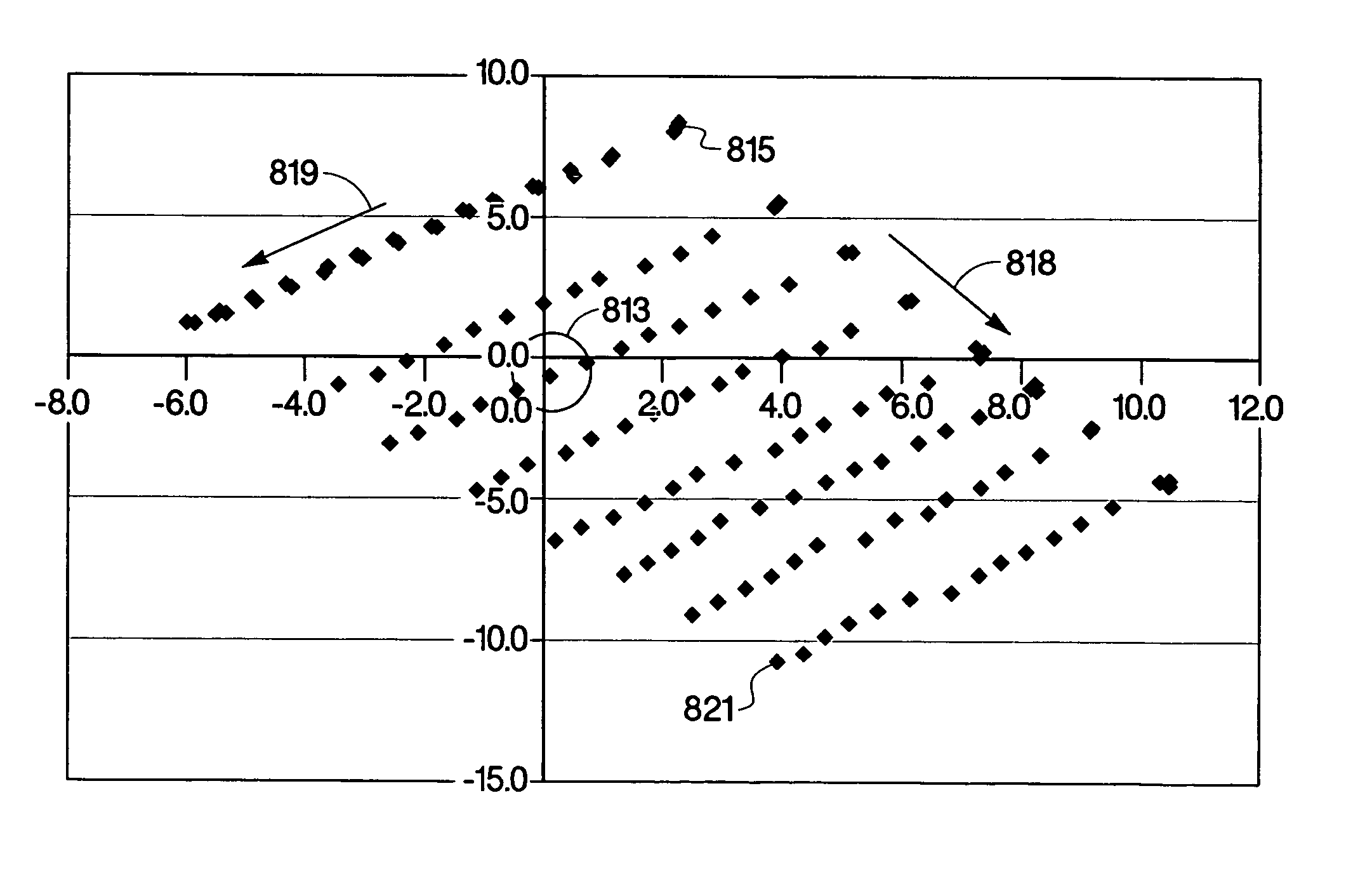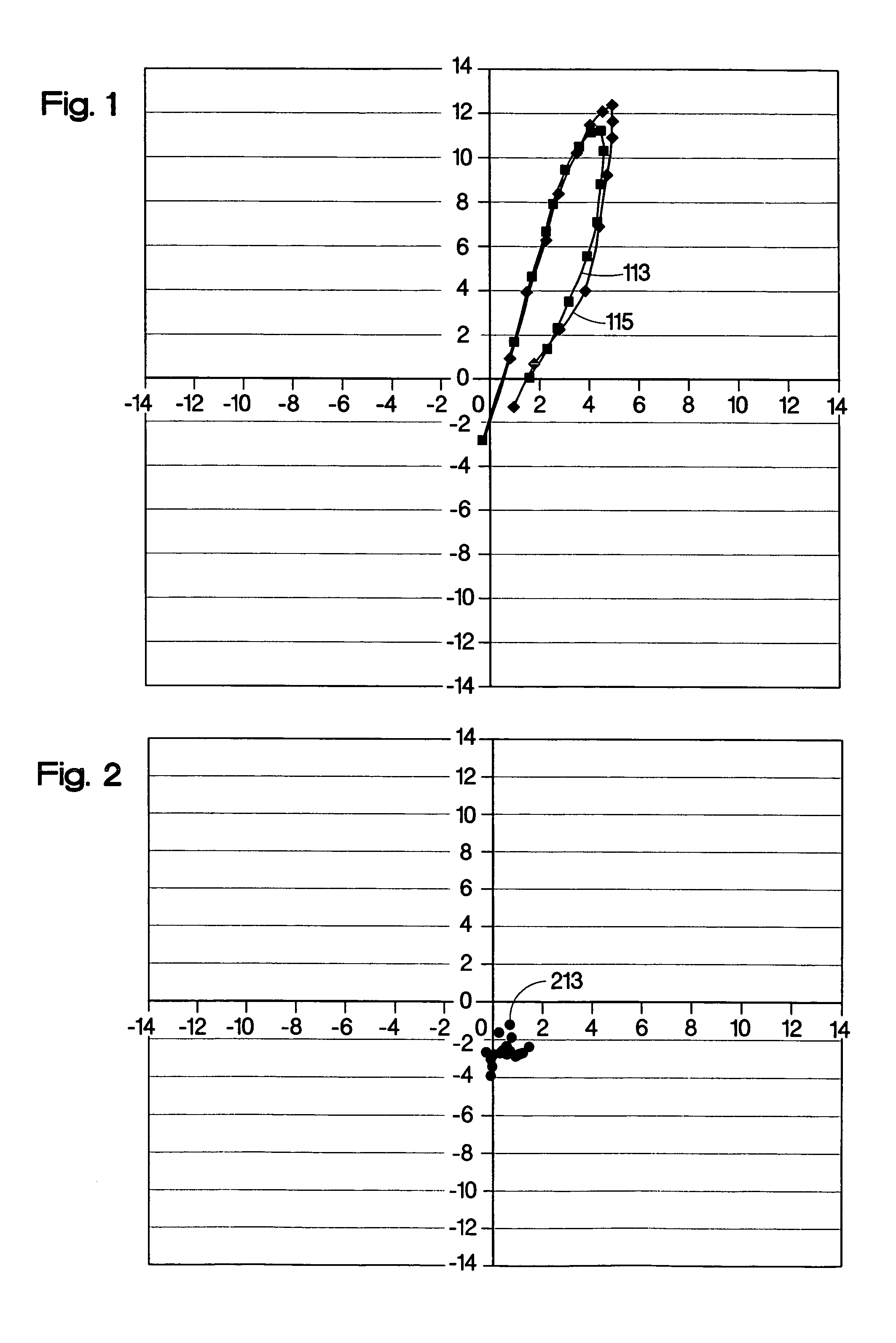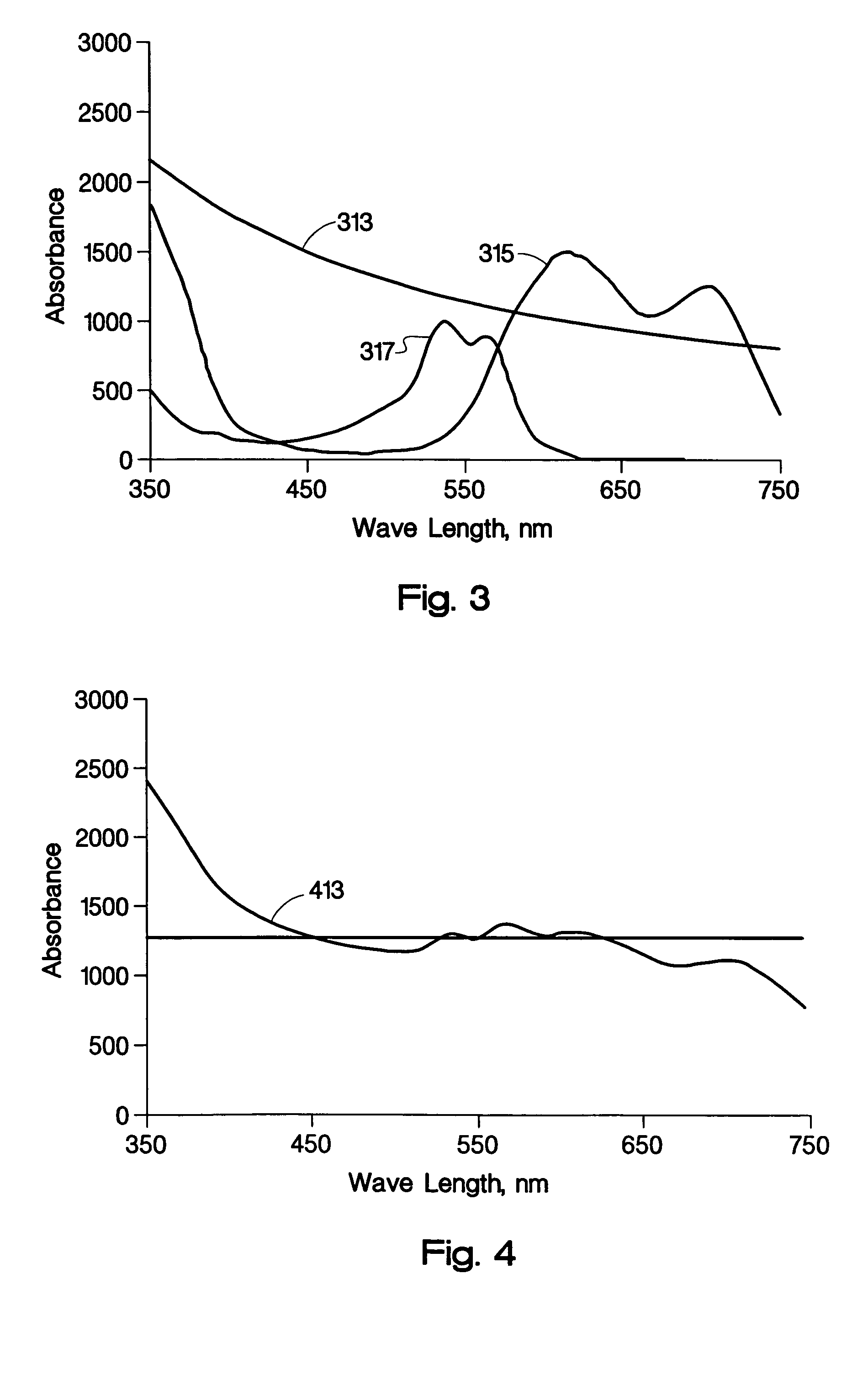Pigment-based inks for ink-jet printing
a pigment-based ink and ink technology, applied in the field of black and gray pigmented inks, can solve the problems of closed loop color correction and/or extremely tight manufacturing tolerances, non-neutral black and white tones and color balance, and inks that are not suitable for glossy photo printing
- Summary
- Abstract
- Description
- Claims
- Application Information
AI Technical Summary
Benefits of technology
Problems solved by technology
Method used
Image
Examples
example 1
[0058]A neutral medium gray ink was comprised of a blend of carbon black (0.5 weight percent), cyan pigment (0.202 weight percent PB 15:4), and magenta pigment (0.271 weight percent PR122) together with vehicle. The color of the neutral medium gray ink blend, the dots designated as 213 on the color map, was tested and the result was plotted on a color map shown in FIG. 2.
[0059]As a comparative example, FIG. 1 shows the browning of two conventional gray inks, 113 and 115, on a color map. The two gray inks, 113 and 115, were made of pure carbon black. 113 is Epson 2200 Gray and 115 is 1% wt. BP1100. This graph represents the change in the color of the patches as the patches increase in volumes of ink per unit area.
[0060]FIG. 2 shows the neutrality of the neutral medium gray ink made as described above. Alternatively, the blend of the present invention can be made to achieve any L* value to satisfy the specific demands of the color map. A broad mixing ratio range in the blend of the pr...
example 2
[0061]The individual absorption spectra of K (carbon black) (designated as 313), C (cyan pigment PB15:4) (designated as 315) and M (magenta pigment PR122) (designated as 317) were measured and compared as shown in FIG. 3. The K, C and M were then blended to achieve a neutral black ink. In blending the K, C and M, the goal was to make the absorption spectra as flat as possible. The absorption spectrum, designated as 413, for the blend is shown in FIG. 4. It has been found that the absorption spectra of the blend approximates a flat line on the absorptivity chart such as the approximate horizontal line shown in FIG. 4. This is achieved when the individual absorptivities of K, C, and M from 350 nm to 750 nm (as shown in FIG. 3) can be combined to achieve a neutral blend black ink having an absorptivity which approximates a horizontal absorptivity line from 350 nm to 750 nm. The amounts of K, C, and M needed to be combined in order to achieve the neutral blend having absorptivity approx...
example 3
[0062]A graph, as shown in FIG. 5, was plotted in a*b* colorspace to show the target area of the blend of K (carbon black)(the point 513), C (cyan pigment PB15:4) (the point 519) and M (magenta pigment PR122) (the point 521) versus the position of the points (K=513; C=519; M=521) of the individual, unblended K, C and M. From the points of the unblended K, C and M was defined a triangle (the perimeter of which is marked 515) within which was the target (the middle of the target indicated as 517) for the neutral blended K, C and M points.
PUM
| Property | Measurement | Unit |
|---|---|---|
| wavelength | aaaaa | aaaaa |
| wavelength | aaaaa | aaaaa |
| weight percent | aaaaa | aaaaa |
Abstract
Description
Claims
Application Information
 Login to View More
Login to View More - R&D
- Intellectual Property
- Life Sciences
- Materials
- Tech Scout
- Unparalleled Data Quality
- Higher Quality Content
- 60% Fewer Hallucinations
Browse by: Latest US Patents, China's latest patents, Technical Efficacy Thesaurus, Application Domain, Technology Topic, Popular Technical Reports.
© 2025 PatSnap. All rights reserved.Legal|Privacy policy|Modern Slavery Act Transparency Statement|Sitemap|About US| Contact US: help@patsnap.com



